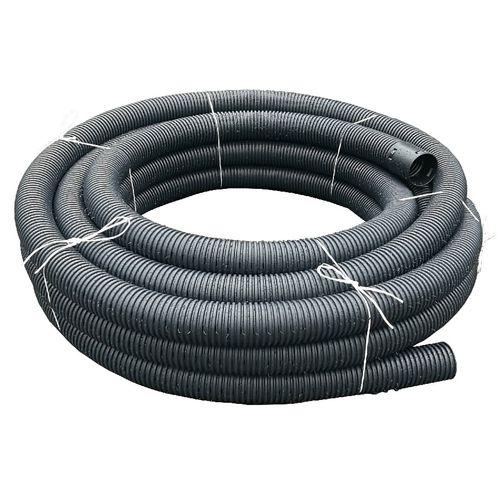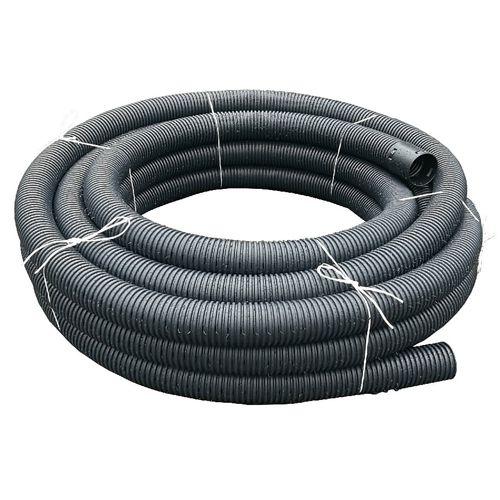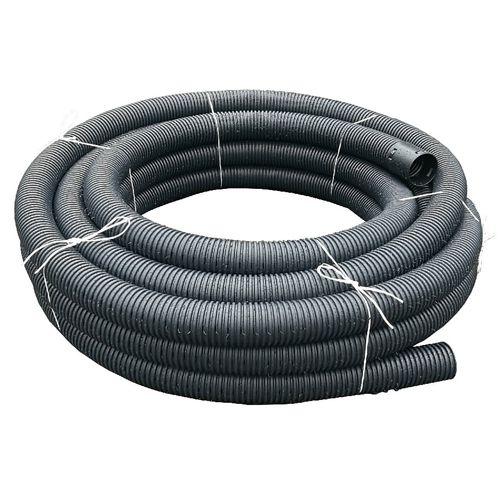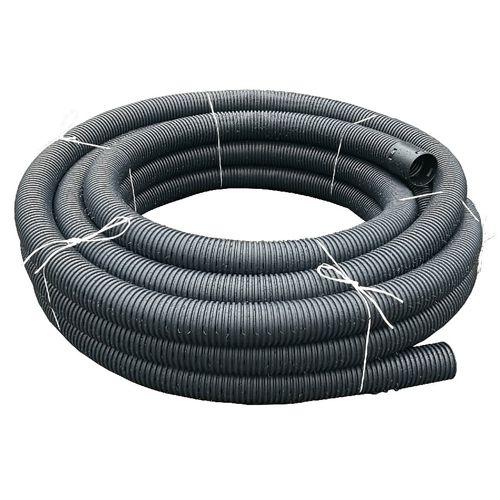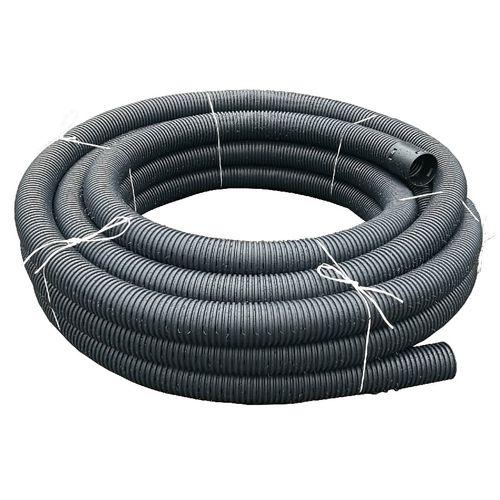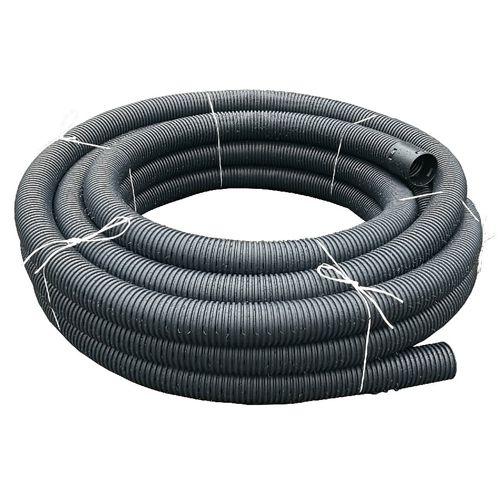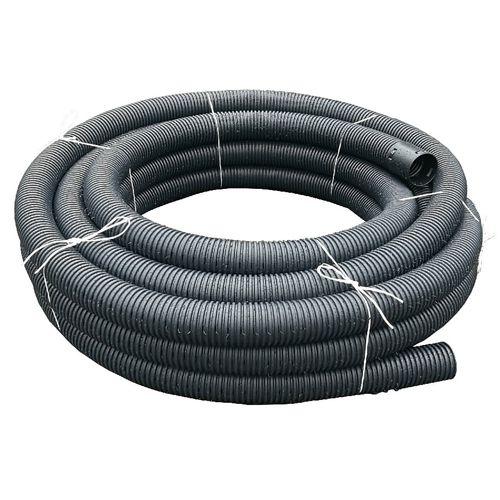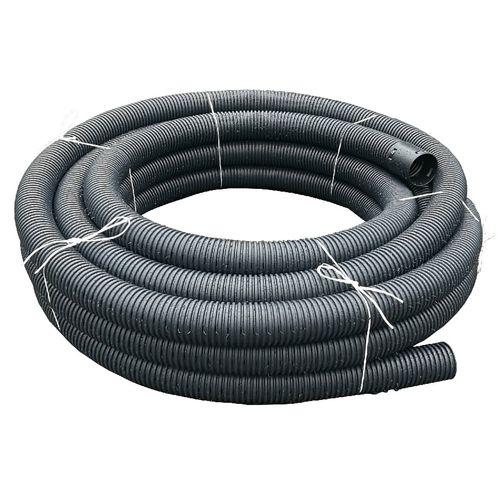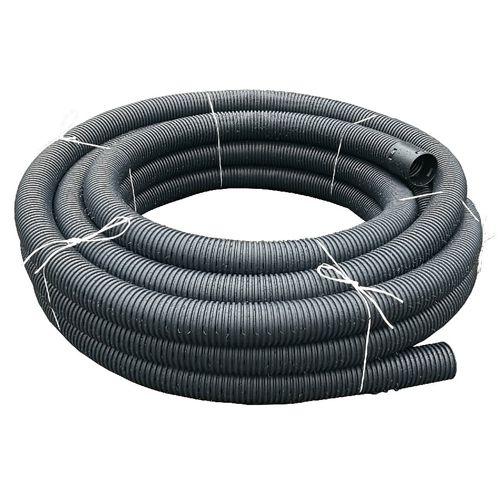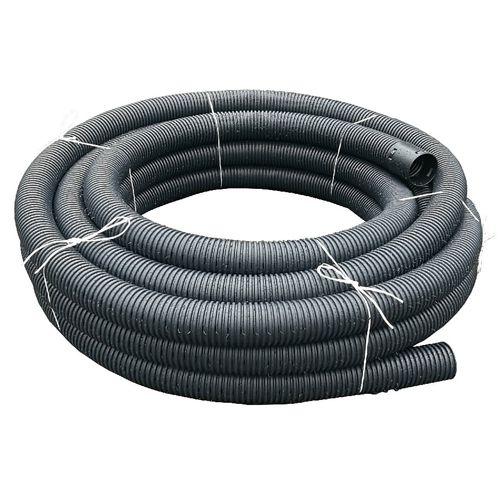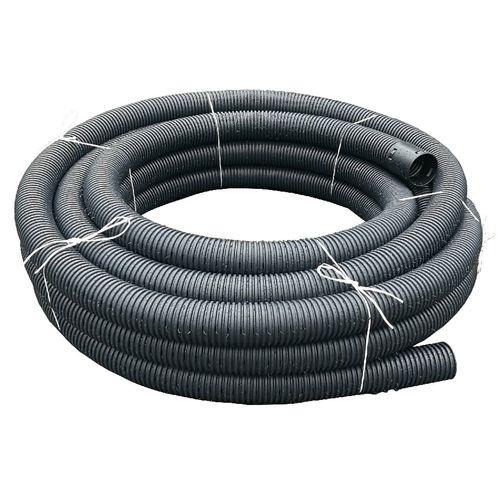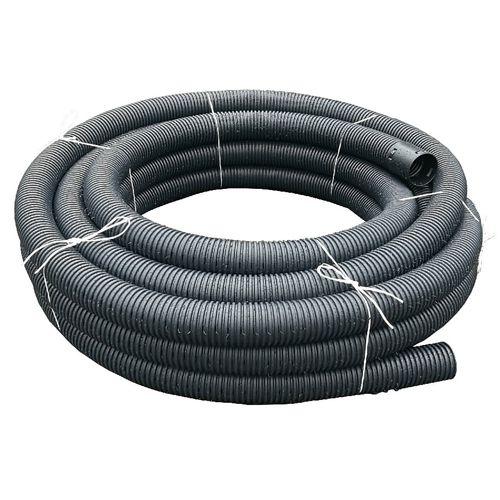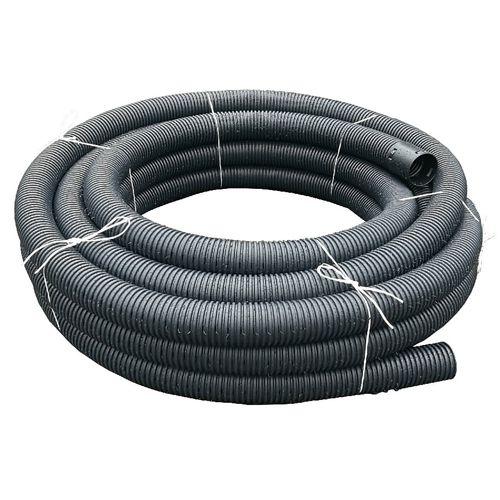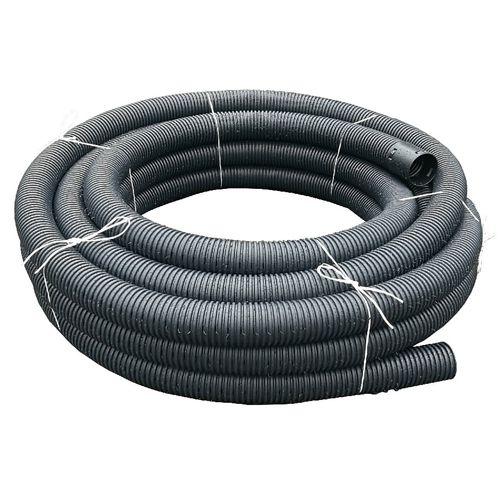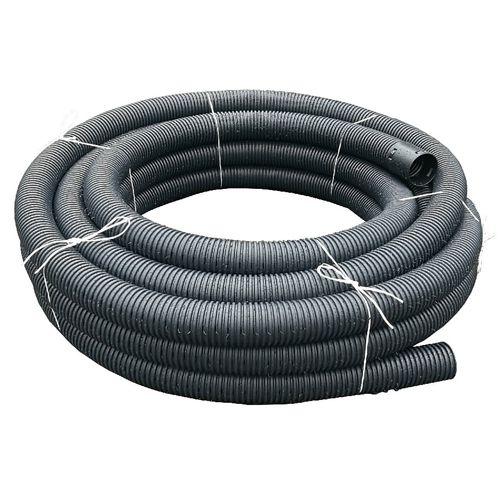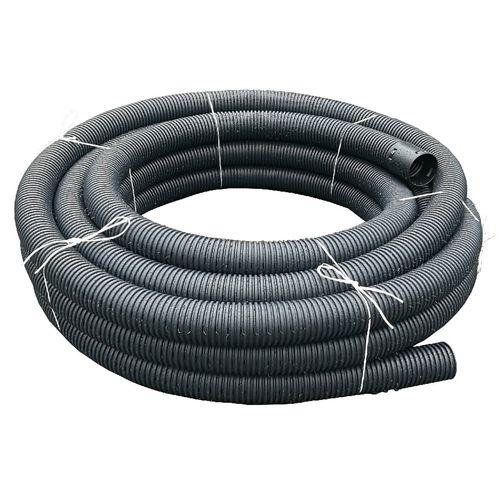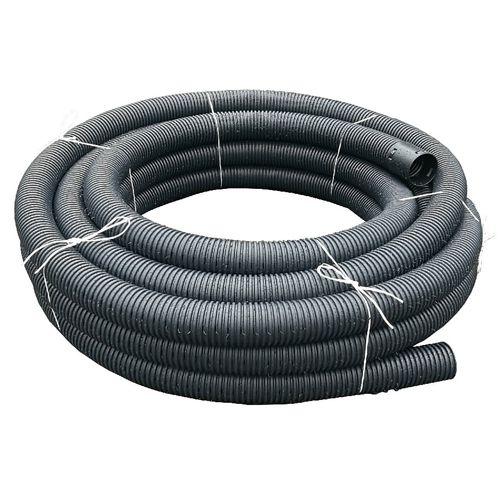Perforated Land Drain
Perforated land drain is a type
Perforated land drain is a type of corrugated pipe that has small holes or slots cut along its length. These perforations allow water from the surrounding soil to seep into the pipe.
It's primarily used for subsurface water management to:
- Prevent waterlogging: In areas with excess rainfall or impermeable soil (like clay), it collects surplus water that would otherwise make the ground boggy and unusable.
- Improve soil quality: By removing excess water, it helps improve soil aeration, promoting healthier plant growth in agricultural fields, gardens, and sports pitches.
- Protect foundations and structures: In construction, it helps alleviate static load on underground structures and retaining walls by diverting water away from building foundations, preventing flooding and potential damage.
The collected water is then directed to a suitable discharge point, such as a storm drain, a watercourse (with appropriate permissions), or a soakaway system. Often, the pipe is laid within a trench surrounded by permeable aggregate (like gravel) and sometimes wrapped in a geotextile membrane to prevent fine soil particles from entering and clogging the perforations.
Perforated Land Drain
17 products
Showing 1 - 17 of 17 products
Perforated land drain is a type of corrugated
Perforated land drain is a type of corrugated pipe that has small holes or slots cut along its length. These perforations allow water from the surrounding soil to seep into the pipe.
It's primarily used for subsurface water management to:
- Prevent waterlogging: In areas with excess rainfall or impermeable soil (like clay), it collects surplus water that would otherwise make the ground boggy and unusable.
- Improve soil quality: By removing excess water, it helps improve soil aeration, promoting healthier plant growth in agricultural fields, gardens, and sports pitches.
- Protect foundations and structures: In construction, it helps alleviate static load on underground structures and retaining walls by diverting water away from building foundations, preventing flooding and potential damage.
The collected water is then directed to a suitable discharge point, such as a storm drain, a watercourse (with appropriate permissions), or a soakaway system. Often, the pipe is laid within a trench surrounded by permeable aggregate (like gravel) and sometimes wrapped in a geotextile membrane to prevent fine soil particles from entering and clogging the perforations.
